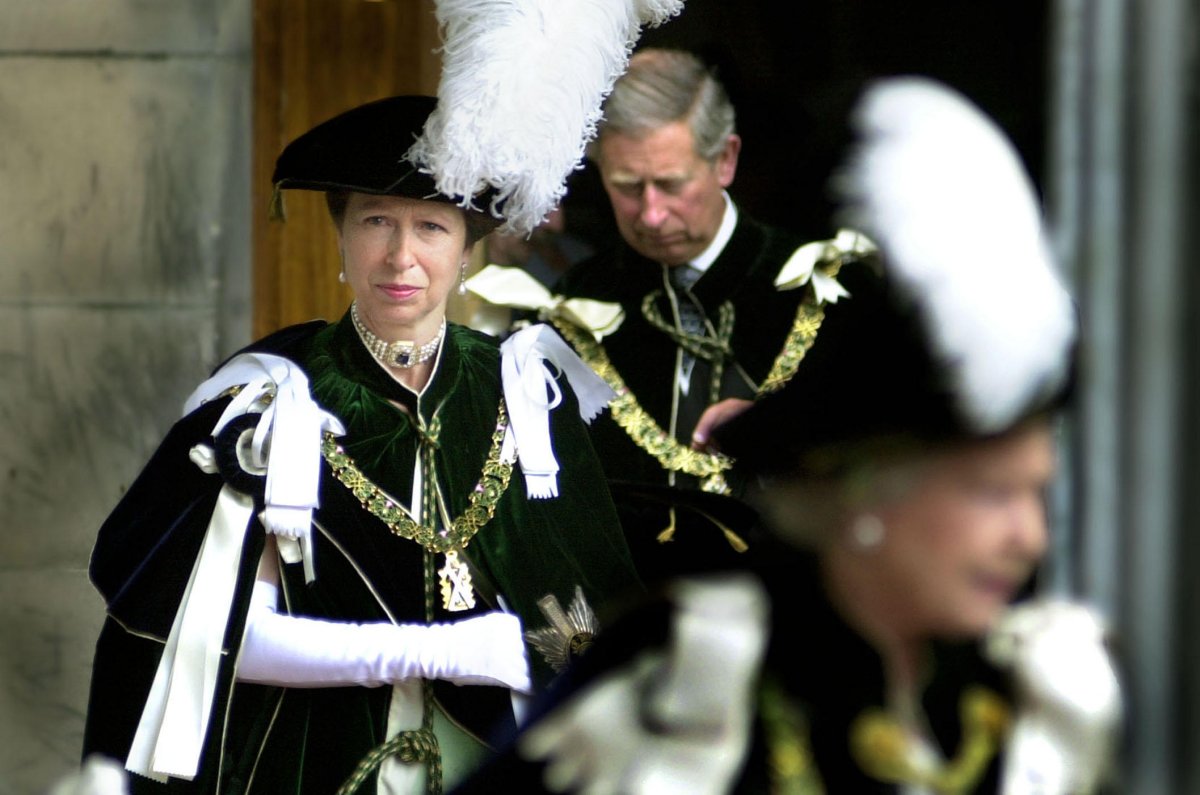 The Princess Royal and the Duke of Rothesay leave St. Giles’ Cathedral in Edinburgh after her Order of the Thistle installation on July 4, 2001 (David Cheskin/PA Images/Alamy)
The Princess Royal and the Duke of Rothesay leave St. Giles’ Cathedral in Edinburgh after her Order of the Thistle installation on July 4, 2001 (David Cheskin/PA Images/Alamy)
Our series highlighting the jewels of the Princess Royal, who celebrates her birthday tomorrow, continues today with a sparkling appearance from a quarter of a century ago, featuring a gorgeous Romanov necklace.
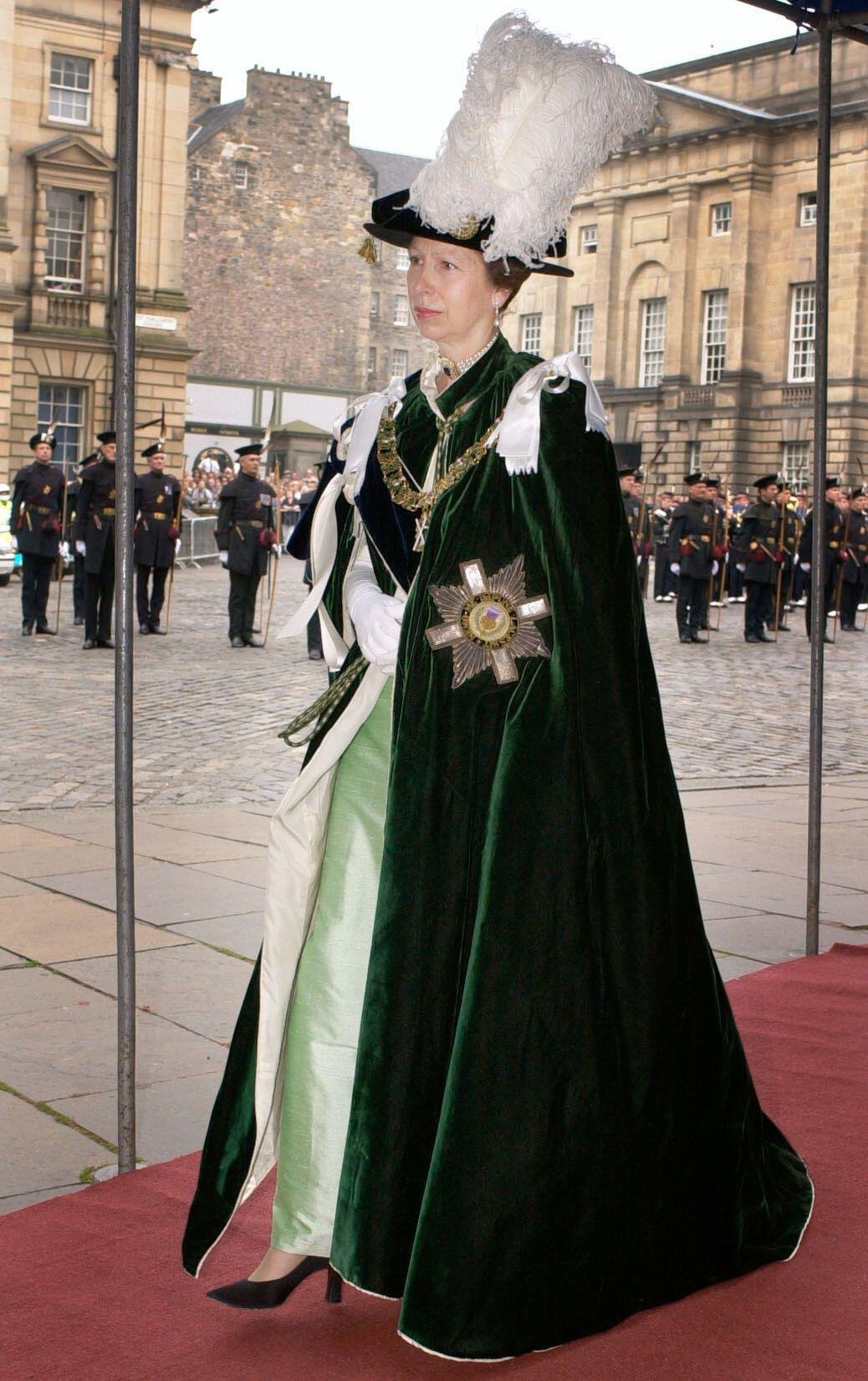 The Princess Royal leaves St. Giles’ Cathedral in Edinburgh after her Order of the Thistle installation on July 4, 2001 (David Cheskin/PA Images/Alamy)
The Princess Royal leaves St. Giles’ Cathedral in Edinburgh after her Order of the Thistle installation on July 4, 2001 (David Cheskin/PA Images/Alamy)
On July 4, 2001, the British royal family was in Scotland for the monarch’s annual residence at the Palace of Holyroodhouse in Edinburgh. That morning, the Queen and the Duke of Edinburgh headed to St. Giles’ Cathedral for the annual Order of the Thistle service. It was a special occasion: the installation of the Princess Royal as a royal lady of the order. The honor had been given to Anne in recognition of her charity work in Scotland, and her elder brother, the Duke of Rothesay—as the Prince of Wales is known when in Scotland—also made the trip north to be part of his sister’s installation service.
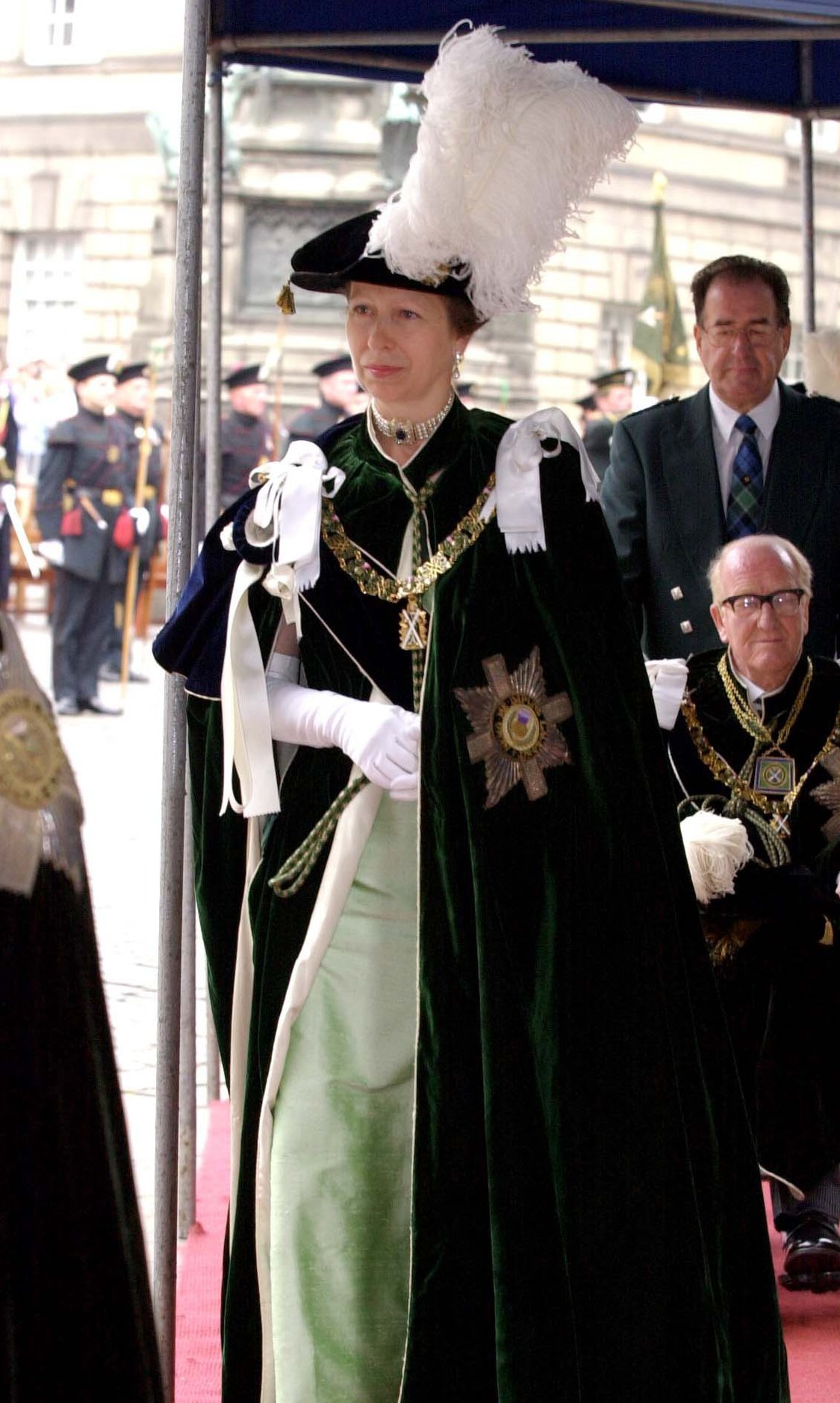 The Princess Royal is pictured at St. Giles’ Cathedral in Edinburgh for her Order of the Thistle installation on July 4, 2001 (Trinity Mirror/Mirrorpix/Alamy)
The Princess Royal is pictured at St. Giles’ Cathedral in Edinburgh for her Order of the Thistle installation on July 4, 2001 (Trinity Mirror/Mirrorpix/Alamy)
For the service, Anne chose to wear a green silk gown beneath her robes. Thistle knights and ladies wear rich green velvet mantles lined with white taffeta, paired with black velvet hats with bright white features. Over the mantle, Anne wears the order’s gold collar, which features elements depicting St. Andrew’s Cross and thistle and rue. (We talked about another important royal treasure inspired by rue recently at Hidden Gems!)
The badge suspended from the collar depicts St. Andrew holding his X-shaped cross, surrounded by the order’s motto, Nemo me impune lacessit (No one provokes me with impunity). The phrase is also Scotland’s national motto, dating from the days of the Stuart dynasty.
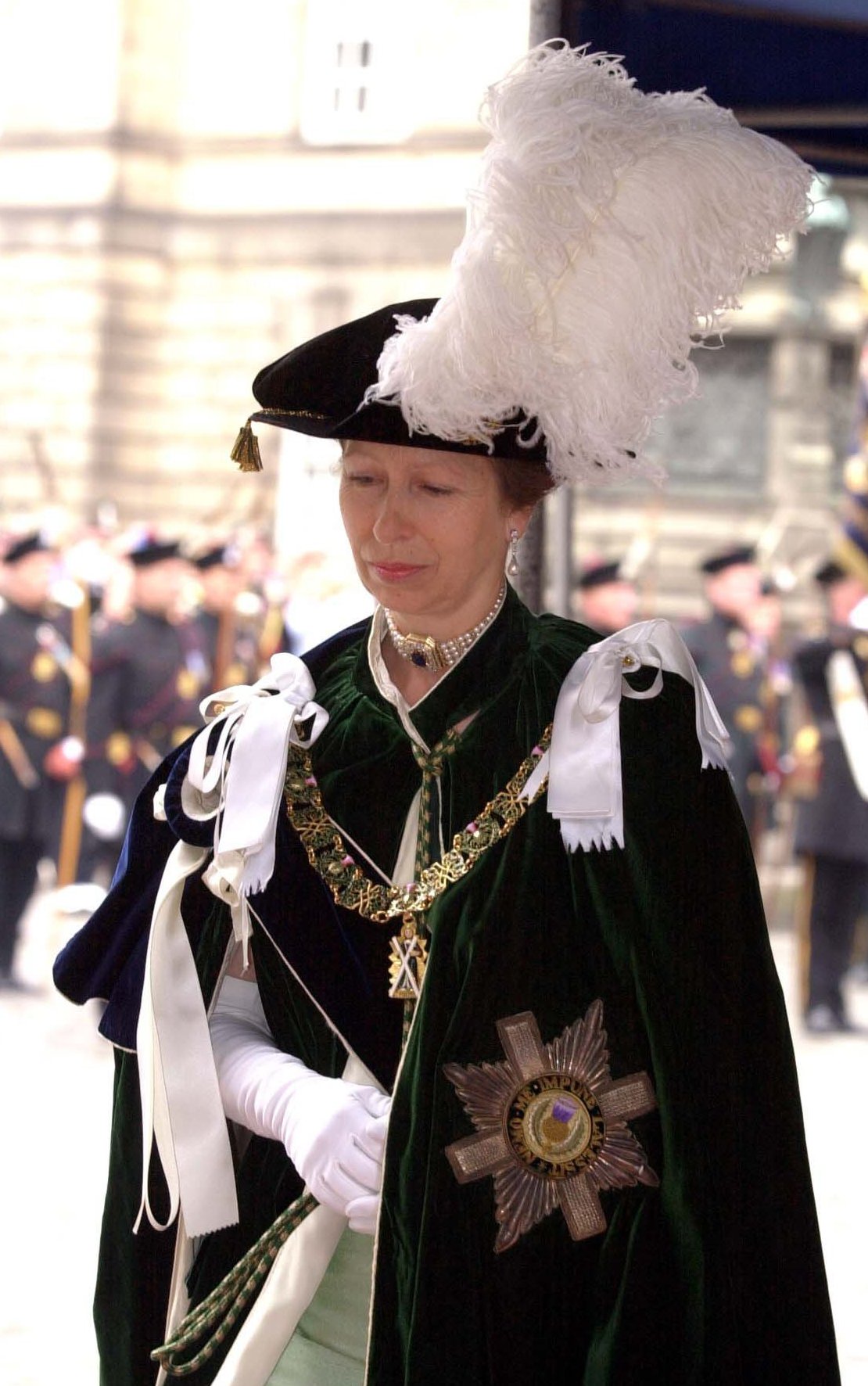 The Princess Royal is pictured at St. Giles’ Cathedral in Edinburgh for her Order of the Thistle installation on July 4, 2001 (Trinity Mirror/Mirrorpix/Alamy)
The Princess Royal is pictured at St. Giles’ Cathedral in Edinburgh for her Order of the Thistle installation on July 4, 2001 (Trinity Mirror/Mirrorpix/Alamy)
With her robes and insignia, Princess Anne wore some special pieces of jewelry. She reached for a pair of classic pearl drop earrings from her jewelry box, pairing them with a necklace of pearls, diamonds, and sapphires that once belonged to the penultimate Empress of Russia.
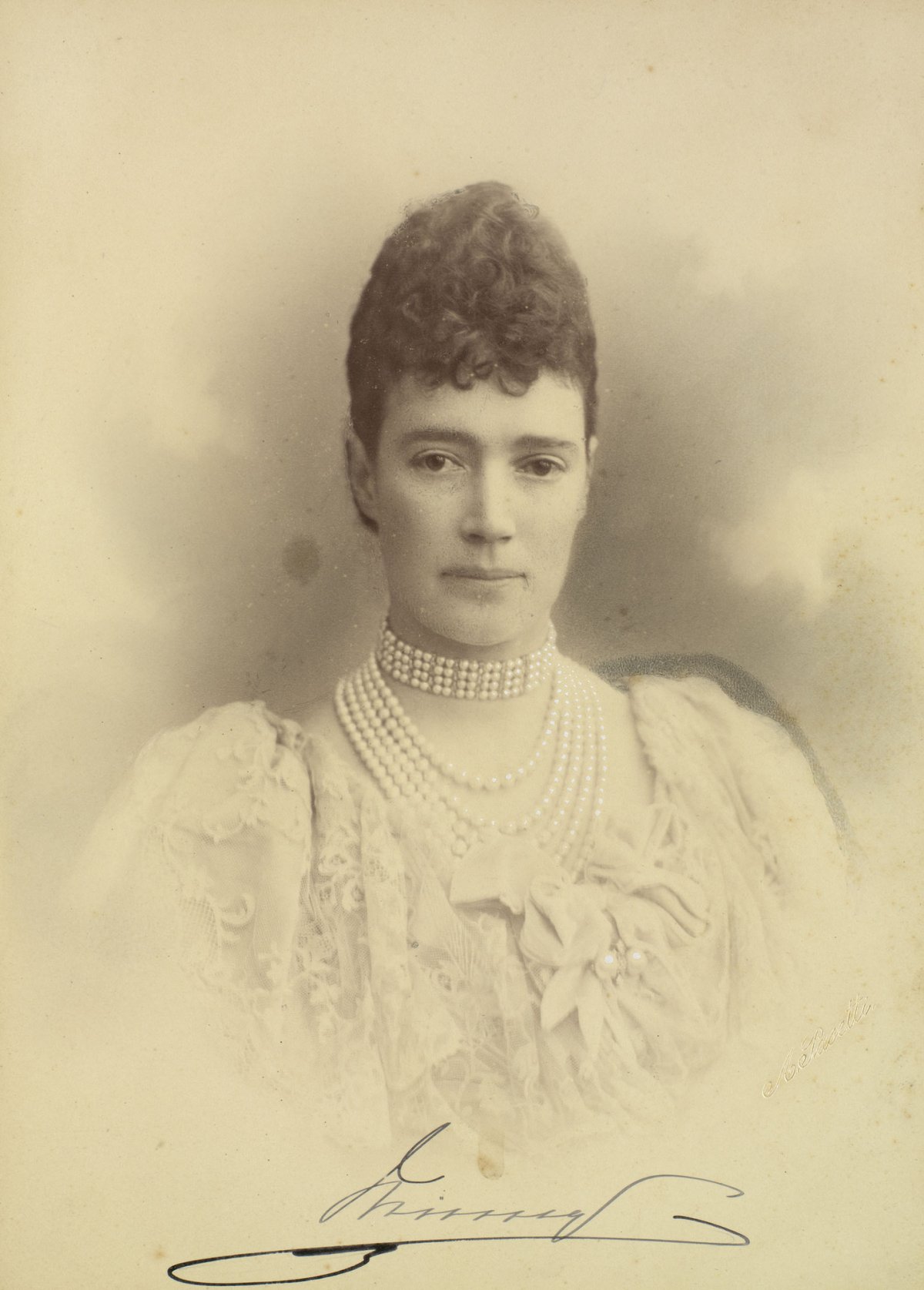 Portrait of Empress Marie Feodorovna of Russia, ca. 1894 (Royal Collection Trust)
Portrait of Empress Marie Feodorovna of Russia, ca. 1894 (Royal Collection Trust)
The necklace dates to the end of the nineteenth century, when Emperor Alexander III and his son, Emperor Nicholas II, ruled in Russia. Alexander’s wife, and Nicholas’s mother, was Princess Dagmar of Denmark. She took the name “Marie Feodorovna” when she married into the Romanov family, and she became a popular and capable Empress when her husband ascended to the throne.
Marie Feodorovna’s jewelry collection was legendary. She was photographed more than once in this classic choker necklace, which features neat double rows of pearls interspersed with vertical gold and diamond spacers. The choker’s clasp features a lovely sapphire set in a cluster of diamonds, but in portraits featuring Marie Feodorovna wearing the necklace, she either has removed the elaborate clasp or placed it at the nape of her neck.
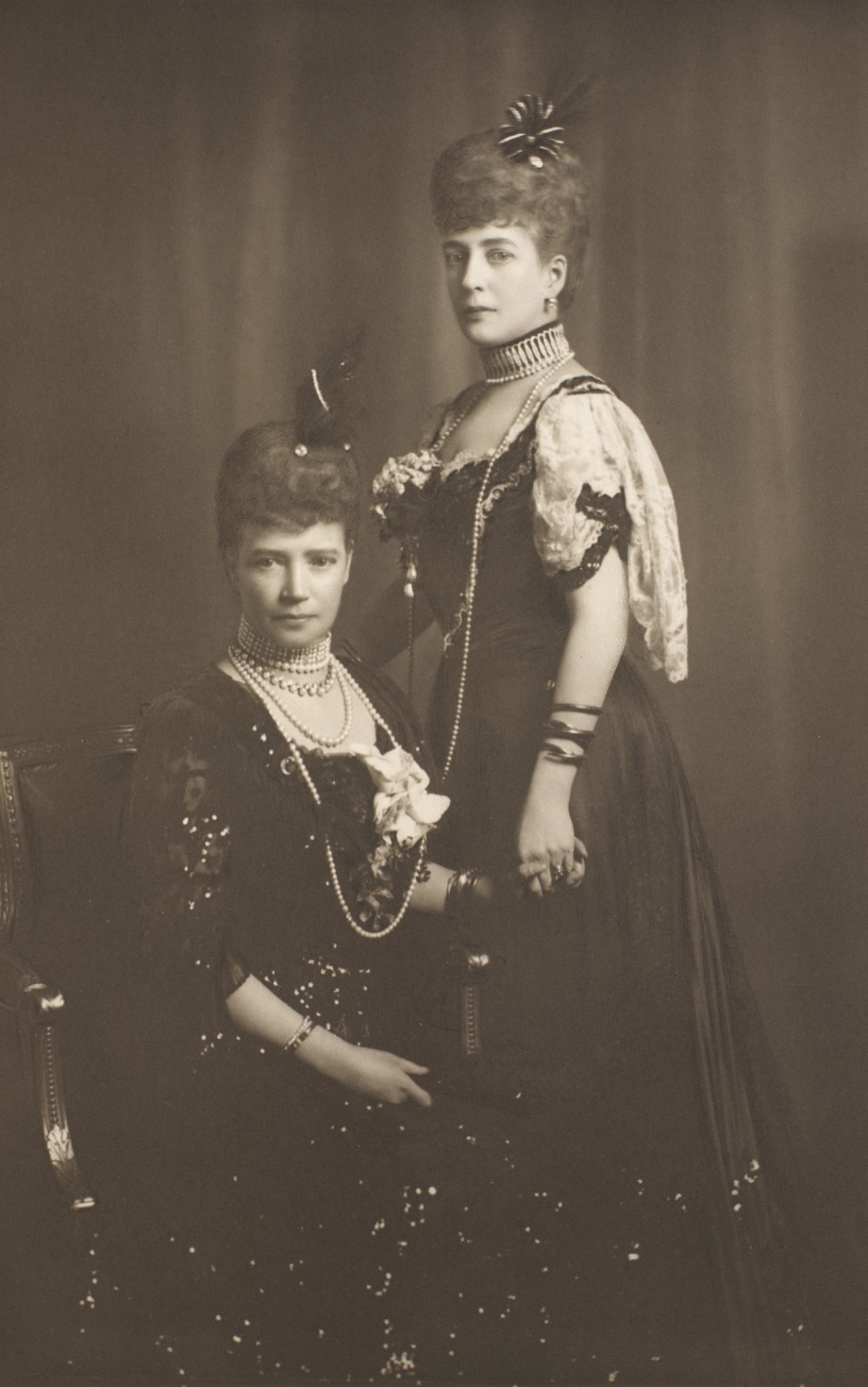 Royal sisters Empress Marie Feodorovna of Russia and Queen Alexandra of the United Kingdom pose for a portrait in court dress, ca. 1907 (Royal Collection Trust)
Royal sisters Empress Marie Feodorovna of Russia and Queen Alexandra of the United Kingdom pose for a portrait in court dress, ca. 1907 (Royal Collection Trust)
Empress Marie Feodorovna was the beloved younger sister of Queen Alexandra of the United Kingdom. They were close throughout their lives, and after the death of their father, King Christian IX of Denmark, and the accession of their brother, King Frederik VIII, they posed together for this gala portrait. In the photograph, Marie Feodorovna again wears the pearl choker necklace. (Alexandra wears a diamond choker featuring interlocking loops, which is now worn by the present Queen of Norway.)
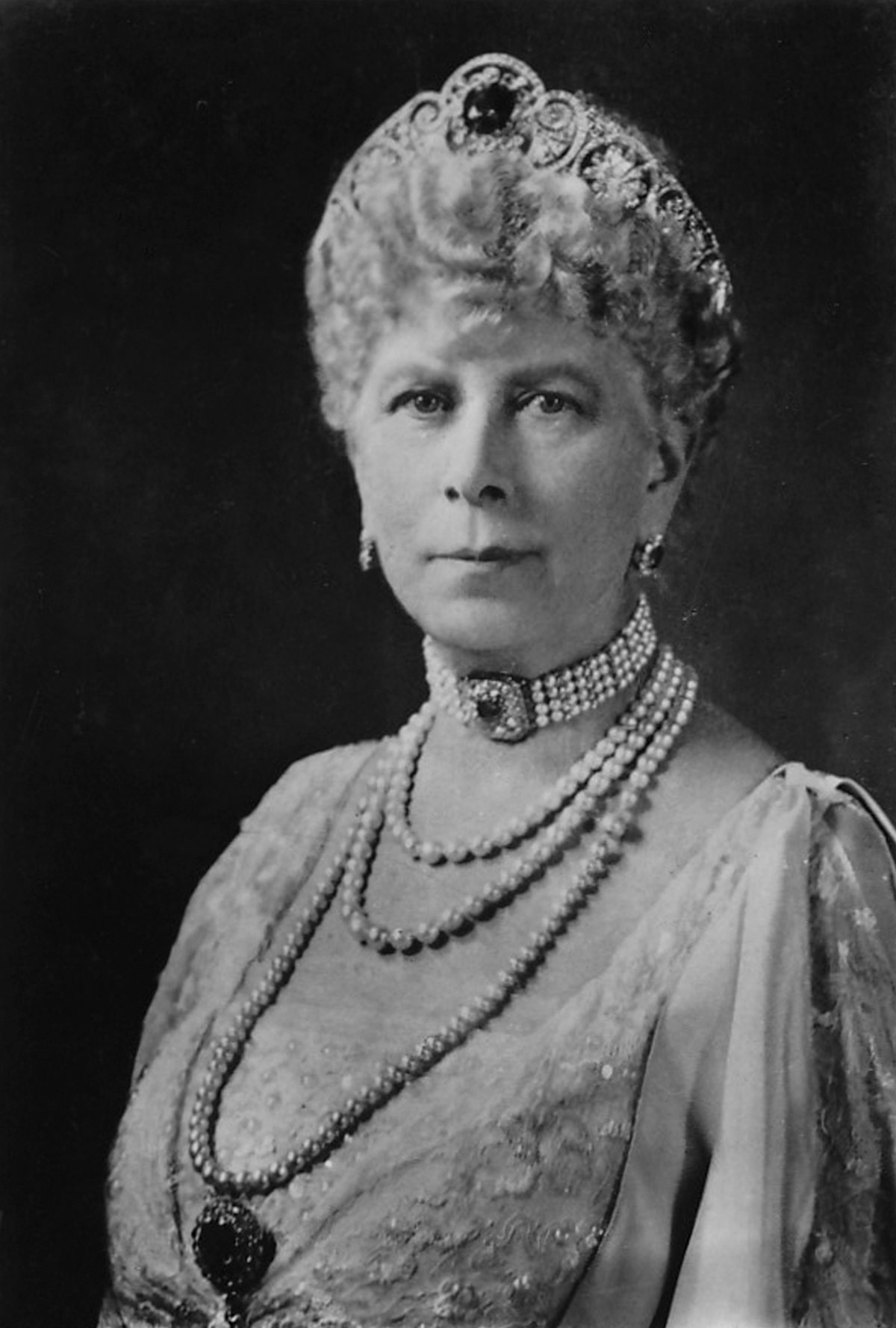 Queen Mary of the United Kingdom, ca. 1937 (Heritage Images/Alamy)
Queen Mary of the United Kingdom, ca. 1937 (Heritage Images/Alamy)
After the Russian revolution knocked the Romanovs from their throne, the Empress lived a quiet life of retirement in Denmark. When she died in 1928, her daughters sold a good deal of her jewelry to fund their lives in exile. Queen Mary, Alexandra’s daughter-in-law, was an enthusiastic purchaser of pieces from the collection. She bought the necklace via Hennels in London for £6,000.
In the portrait above, which dates to the coronation year of 1937, Queen Mary wears the necklace, this time with the sapphire clasp featured prominently at the front. She’s also wearing her Honeysuckle Tiara with a sapphire and diamond center element, more pearls, and the Russian Sapphire Cluster Brooch, reportedly also acquired from Marie Feodorovna’s collection.
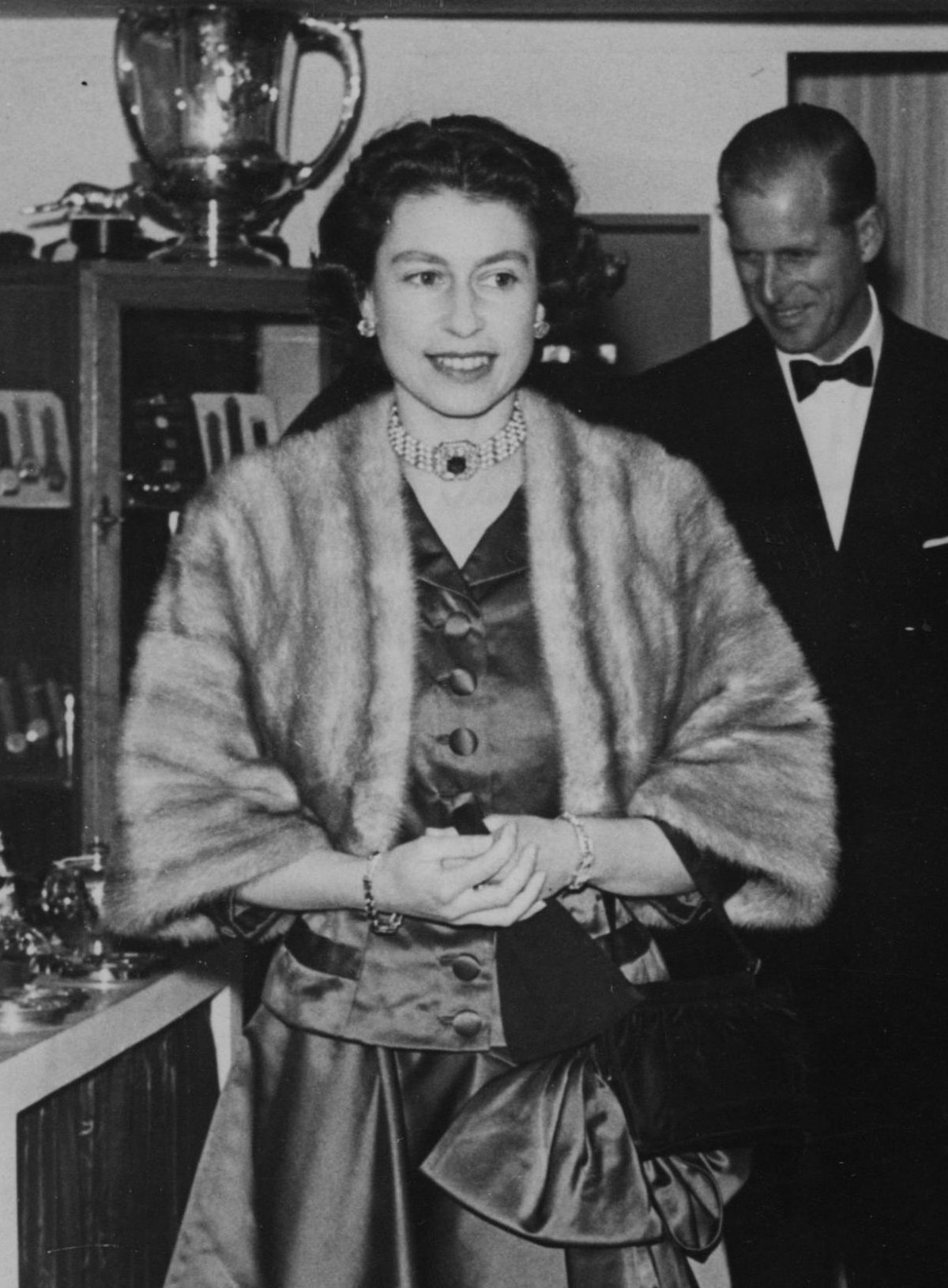 Queen Elizabeth II and the Duke of Edinburgh attend the Horse of the Year Show in London, October 1956 (PA Images/Alamy)
Queen Elizabeth II and the Duke of Edinburgh attend the Horse of the Year Show in London, October 1956 (PA Images/Alamy)
The necklace, along with the lion’s share of Queen Mary’s jewels, was inherited by Queen Elizabeth II in 1953. She wore the piece occasionally as a necklace, and she also sometimes wore it in its alternate setting as a pair of bracelets.
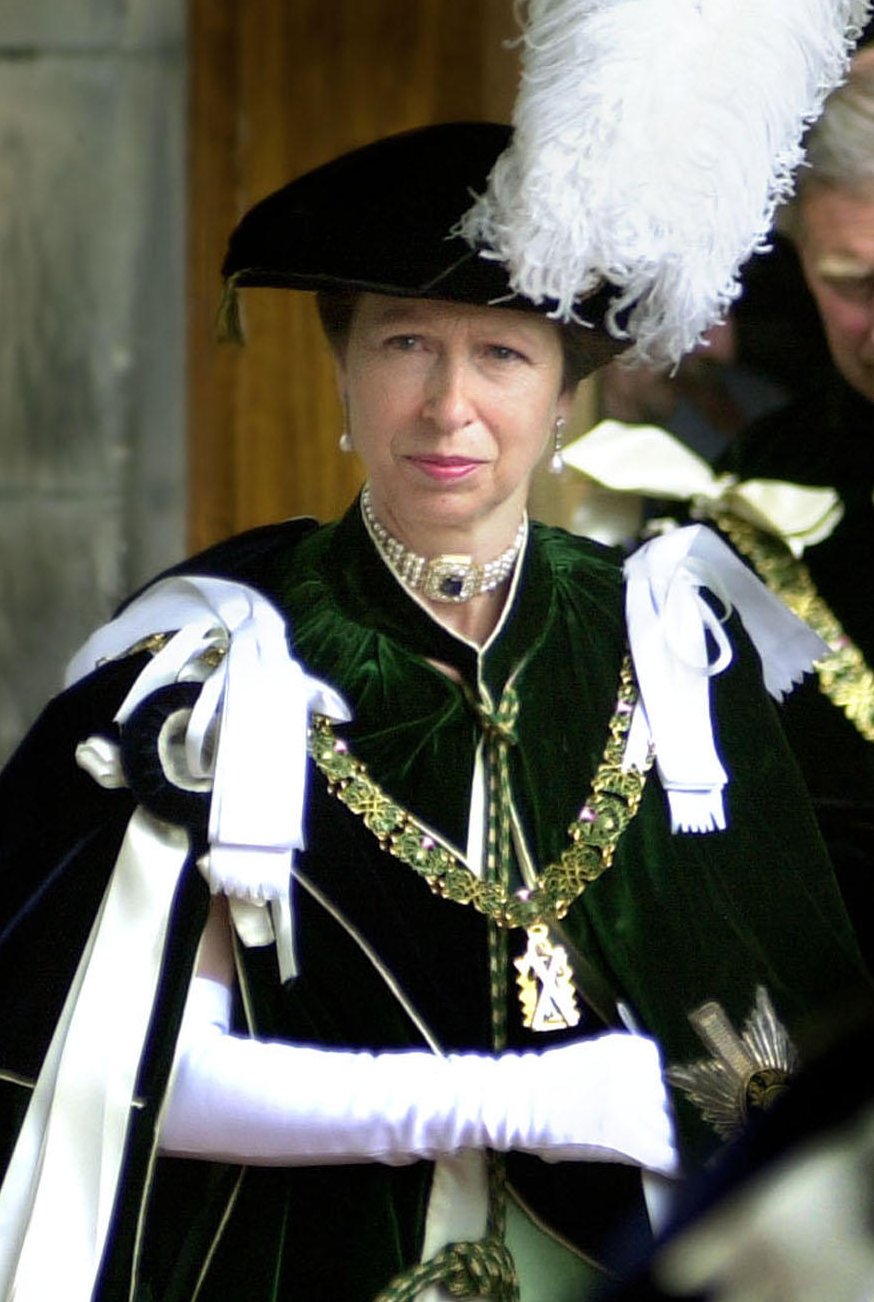 The Princess Royal leaves St. Giles’ Cathedral in Edinburgh after her Order of the Thistle installation on July 4, 2001 (David Cheskin/PA Images/Alamy)
The Princess Royal leaves St. Giles’ Cathedral in Edinburgh after her Order of the Thistle installation on July 4, 2001 (David Cheskin/PA Images/Alamy)
At some point, the late Queen passed the necklace along to her only daughter, the Princess Royal. Anne has worn the necklace faithfully for many years, often reserving it for important moments like her Thistle installation in 2001.